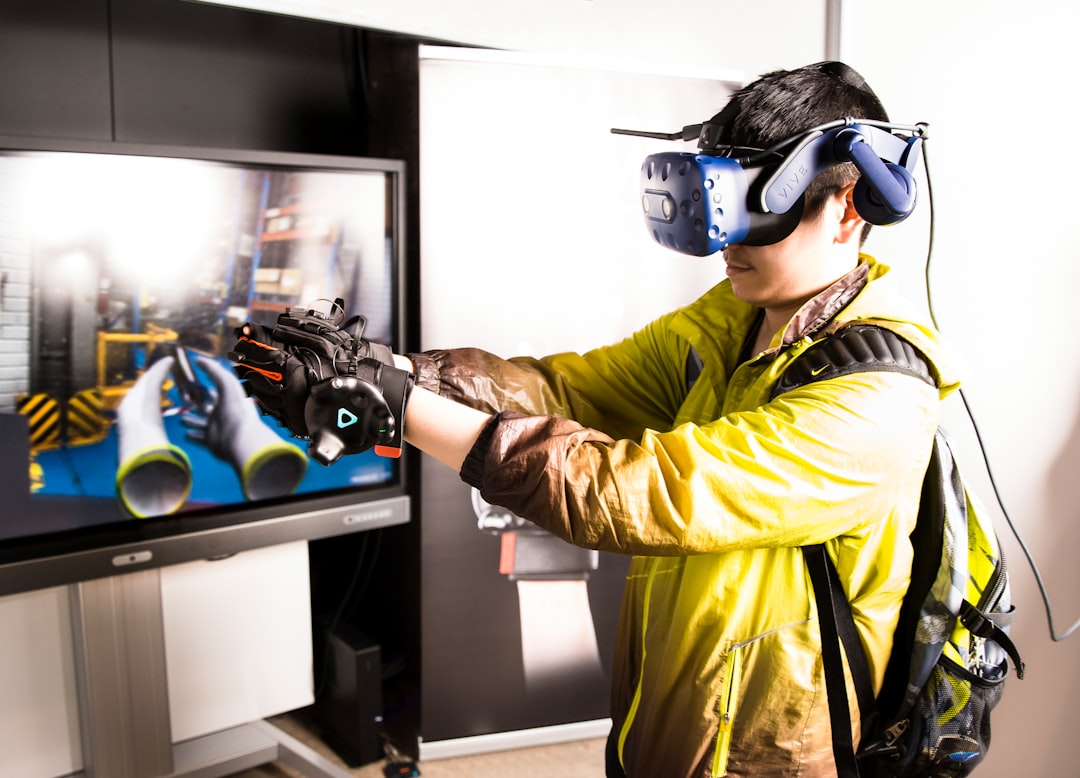The Metaverse is a collective virtual space that merges physical and digital realities, creating an immersive environment where users can interact with each other and digital objects in real-time. This concept transcends traditional online experiences, offering a 3D universe that encompasses various virtual worlds, augmented reality (AR), and virtual reality (VR) environments. The term “Metaverse” was popularized by Neal Stephenson’s 1992 science fiction novel “Snow Crash,” where it described a virtual reality-based successor to the internet.
Today, the Metaverse is evolving into a multifaceted ecosystem that includes gaming, social interaction, commerce, and even education. At its core, the Metaverse is built on the principles of interconnectivity and user-generated content. It allows individuals to create, explore, and engage in a shared digital experience that feels tangible and immersive.
Users can traverse different virtual environments, each with its own unique characteristics and functionalities. The Metaverse is not limited to a single platform or application; rather, it encompasses a wide array of technologies and services that facilitate interaction and engagement across various digital landscapes. As technology continues to advance, the Metaverse is poised to become an integral part of our daily lives, blurring the lines between reality and the digital realm.
Key Takeaways
- The Metaverse is a collective virtual shared space, created by the convergence of virtually enhanced physical reality and physically persistent virtual reality.
- Accessing the Metaverse requires a stable internet connection and compatible hardware, such as VR headsets or augmented reality glasses.
- Avatars in the Metaverse allow users to create and customize their virtual identity, representing themselves in the virtual world.
- Virtual real estate and environments in the Metaverse offer opportunities for exploration, creativity, and even investment.
- Socializing in the Metaverse involves participating in virtual events, joining communities, and interacting with other users in the virtual space.
Accessing the Metaverse requires a combination of hardware, software, and internet connectivity. Users typically need a device capable of running VR or AR applications, such as a VR headset like the Oculus Quest or HTC Vive, or even a standard computer or smartphone for less immersive experiences. The choice of device often influences the depth of interaction one can achieve within the Metaverse.
For instance, VR headsets provide a fully immersive experience, allowing users to feel as though they are physically present in a virtual environment, while traditional screens offer a more limited perspective. Once equipped with the necessary hardware, users can access various platforms that host Metaverse experiences. Popular platforms include Decentraland, Roblox, and Fortnite, each offering unique features and communities.
Users can create accounts on these platforms, customize their avatars, and begin exploring the vast array of virtual spaces available. Navigating these environments often involves using intuitive controls that mimic real-world movements, such as walking, jumping, or flying. As users become more familiar with the interface and functionalities of their chosen platform, they can delve deeper into the Metaverse’s offerings, from gaming to socializing and beyond.
Creating Your Virtual Identity: Avatars and Personalization

In the Metaverse, avatars serve as digital representations of users, allowing them to express their identities in creative and personalized ways. The process of creating an avatar is often one of the first steps users take when entering a virtual world. Most platforms provide extensive customization options, enabling users to choose everything from physical attributes like hair color and body type to clothing styles and accessories.
This level of personalization fosters a sense of ownership and individuality within the digital space. Beyond mere aesthetics, avatars can also embody aspects of a user’s personality or interests. For example, someone passionate about gaming might choose an avatar that reflects their favorite character or genre.
This not only adds an element of fun but also encourages social interaction as users showcase their customized avatars in various virtual settings. The ability to create and modify one’s avatar is a crucial aspect of the Metaverse experience, as it allows individuals to forge connections with others based on shared interests and identities.
Exploring Virtual Spaces: Virtual Real Estate and Environments
| Virtual Space | Metrics |
|---|---|
| Virtual Real Estate | Number of properties listed |
| Virtual Environments | Number of active users |
| Virtual Reality Platforms | Amount of virtual land available |
Virtual real estate has emerged as a significant component of the Metaverse economy, with users buying, selling, and developing digital land within various platforms. Just as physical real estate holds value in the real world, virtual land can be monetized through various means such as hosting events, creating experiences, or even leasing space to other users. Platforms like Decentraland and The Sandbox have established marketplaces where users can trade virtual parcels of land using cryptocurrencies like Ethereum.
The environments within the Metaverse are diverse and often reflect the creativity of their creators. Users can explore everything from sprawling cities filled with interactive experiences to serene landscapes designed for relaxation and socialization. Some virtual spaces are meticulously crafted for specific purposes, such as art galleries showcasing digital art or concert venues hosting live performances by popular artists.
The ability to traverse these varied environments enhances the overall experience of the Metaverse, providing users with endless opportunities for exploration and engagement.
Socializing in the Metaverse: Virtual Events and Communities
Social interaction is at the heart of the Metaverse experience. Users can connect with friends or meet new people from around the globe through various social features integrated into different platforms. Virtual events have become increasingly popular, ranging from concerts and art exhibitions to gaming tournaments and educational seminars.
These events often attract large audiences, allowing participants to engage in real-time discussions and activities while enjoying immersive experiences. Communities within the Metaverse are often formed around shared interests or activities. For instance, gamers may congregate in specific areas dedicated to their favorite games, while artists might gather in virtual galleries to showcase their work.
These communities foster collaboration and creativity, enabling users to share ideas and resources while building lasting relationships. The social aspect of the Metaverse not only enhances individual experiences but also contributes to a sense of belonging among users who share similar passions.
Making Money in the Metaverse: Virtual Economies and Opportunities

The Metaverse has given rise to new economic models that allow users to generate income through various activities. Virtual economies are thriving as individuals engage in buying and selling digital assets such as virtual real estate, clothing for avatars, or even unique digital art pieces known as non-fungible tokens (NFTs). These transactions often occur using cryptocurrencies, which have gained popularity due to their decentralized nature and potential for investment growth.
Entrepreneurs are finding innovative ways to capitalize on opportunities within the Metaverse. For example, some individuals create and sell virtual goods or services tailored to specific audiences. Others may develop games or experiences that attract users willing to pay for access or premium features.
Additionally, brands are increasingly recognizing the potential of the Metaverse for marketing and advertising purposes, leading to partnerships that enhance user engagement while generating revenue for both creators and platforms.
Staying Safe in the Virtual World: Security and Privacy in the Metaverse
As with any online environment, safety and privacy are paramount concerns within the Metaverse. Users must navigate potential risks such as cyberbullying, harassment, or data breaches while engaging in virtual spaces. Many platforms implement safety features such as reporting mechanisms and moderation tools to help protect users from harmful behavior.
Additionally, educating users about online etiquette and responsible behavior is essential for fostering a positive community atmosphere. Privacy is another critical aspect of navigating the Metaverse safely. Users should be aware of how their data is collected and used by different platforms.
Many services require personal information for account creation or transactions; therefore, understanding privacy policies is crucial for safeguarding one’s identity. Utilizing privacy settings effectively can help users control who can access their information while participating in various activities within the Metaverse.
The Future of the Metaverse: Trends and Predictions
The future of the Metaverse is poised for significant growth and transformation as technology continues to advance at an unprecedented pace. One notable trend is the increasing integration of artificial intelligence (AI) into virtual environments. AI can enhance user experiences by providing personalized recommendations based on individual preferences or facilitating more realistic interactions between avatars.
This could lead to more engaging narratives within games or more dynamic social interactions among users. Another prediction involves the expansion of cross-platform compatibility within the Metaverse. As different platforms strive for interoperability, users may find it easier to transition between various virtual worlds without losing their identities or assets.
This interconnectedness could foster a more cohesive experience across different environments while encouraging collaboration among developers. Furthermore, as businesses recognize the potential of virtual spaces for commerce and marketing, we may see an influx of brands establishing a presence in the Metaverse. This could lead to innovative marketing strategies that leverage immersive experiences to engage consumers in ways traditional advertising cannot achieve.
In summary, the Metaverse represents a rapidly evolving frontier that combines technology with human interaction in unprecedented ways. As we continue to explore this digital landscape, it will undoubtedly shape how we connect, create, and conduct business in our increasingly interconnected world.

Leave a Reply